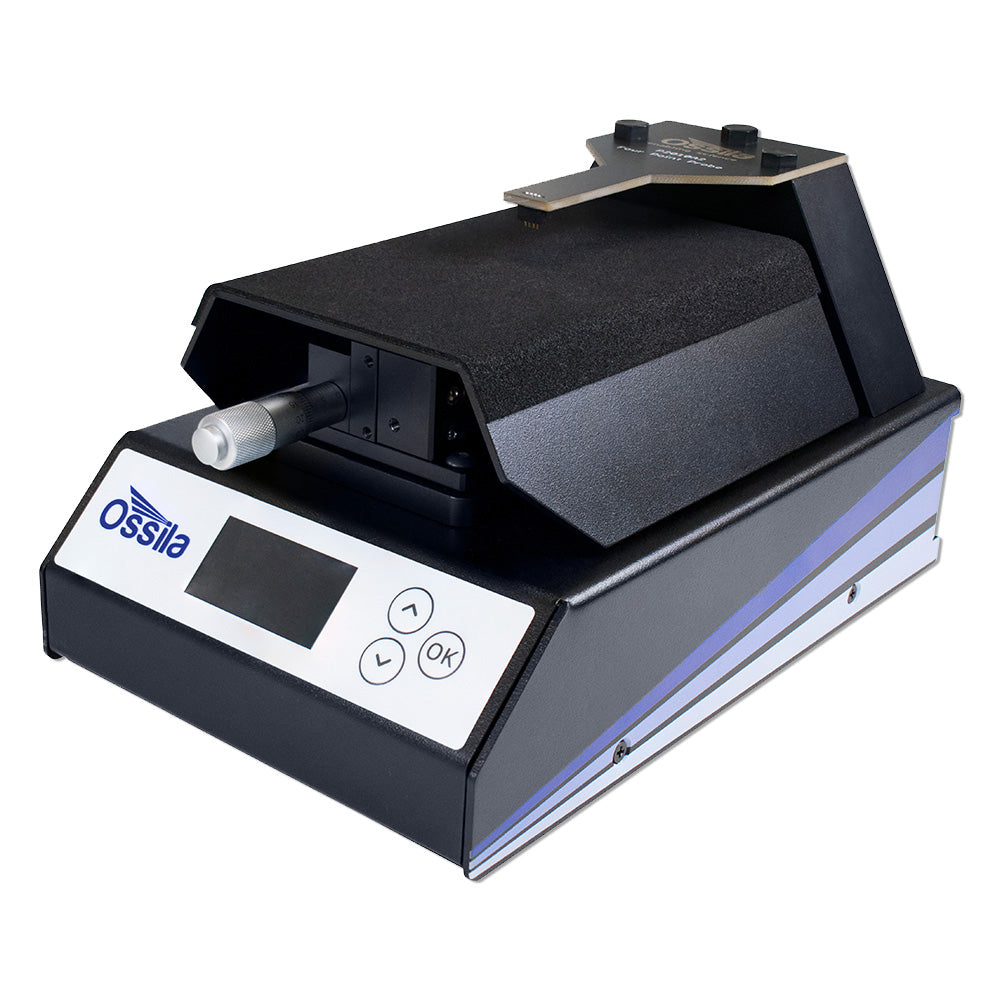
Source: Ossila
Understanding Probing Errors in Solar Cell Testing
Probing errors can lead to issues with the fill factor (FF) of solar cells, as well as errors in the open-circuit voltage (Voc) and short-circuit current (Jsc).
Cell Testing Setup
In cell testing, a four-point probe configuration is commonly used to make contact with the cell. This setup involves a current and voltage probe on the top of the cell, as well as a current and voltage probe on the bottom of the cell. Typically, the metal block serves as the rear current probe, with a voltage pin passing through it. Multiple pairs of voltage and current probes are often used for the top contacts to ensure accurate measurements.
Importance of Proper Contact
It is crucial that the probes establish good contact with the cell during testing. The voltage and current probes should be in close proximity to each other without touching. If there is poor contact between the probes and the cell, or if the probes are spaced too far apart, spurious measurements may result.
Effects of Contacting Issues
When there are problems with contacting, the apparent fill factor measured during testing can exceed the theoretical maximum (e.g., 0.85 for silicon solar cells under one sun illumination). To address contacting issues, simply adjusting the probe positions on the cell and retesting can often resolve the issue. Significant changes in the fill factor when moving the probes indicate a contacting problem that needs to be addressed.
By understanding and addressing probing errors in solar cell testing, researchers and manufacturers can ensure the accuracy and reliability of their measurements, leading to improved overall performance of solar cell technologies.

Source: Ossila
